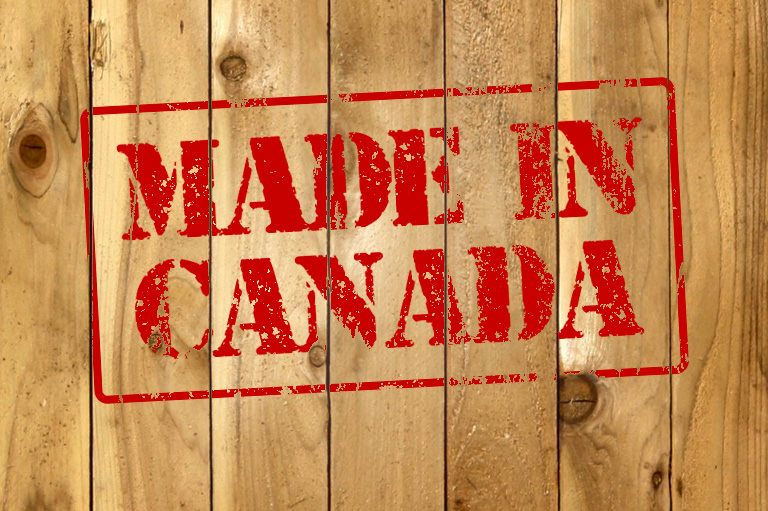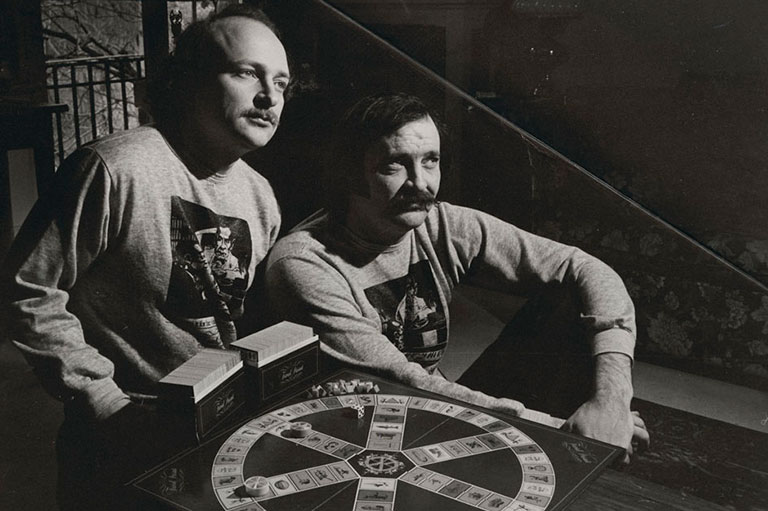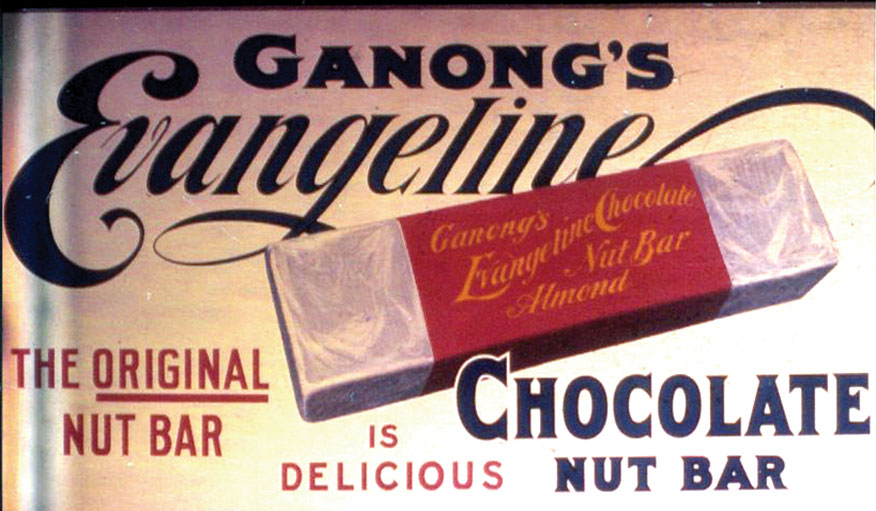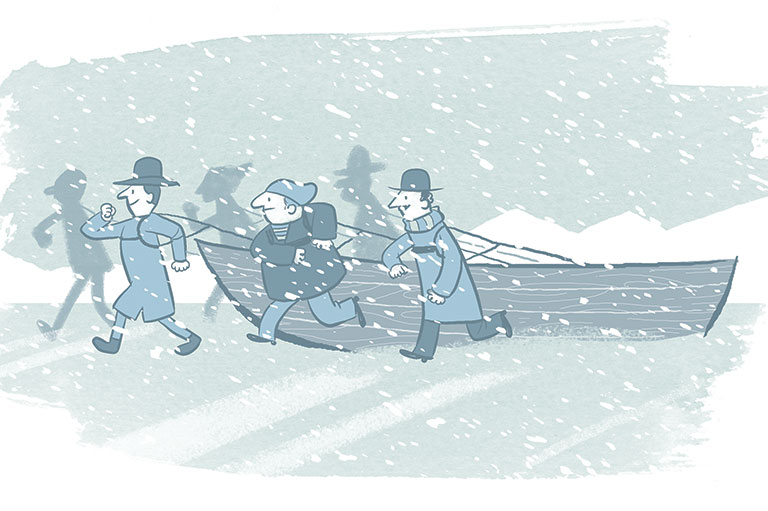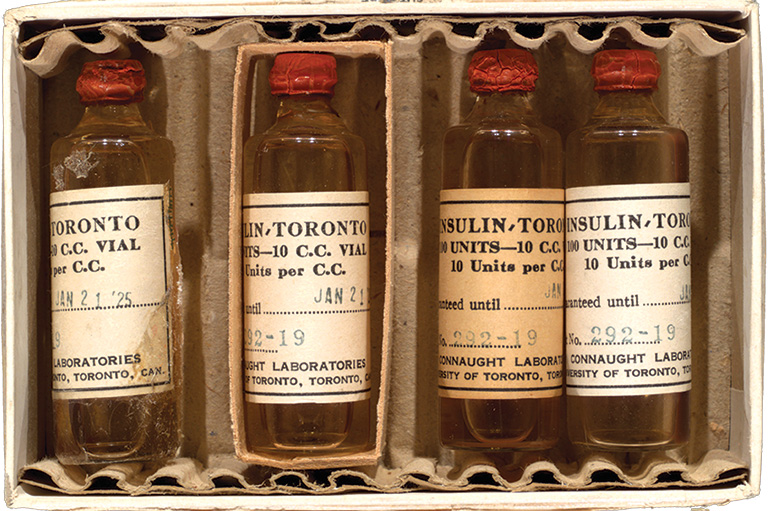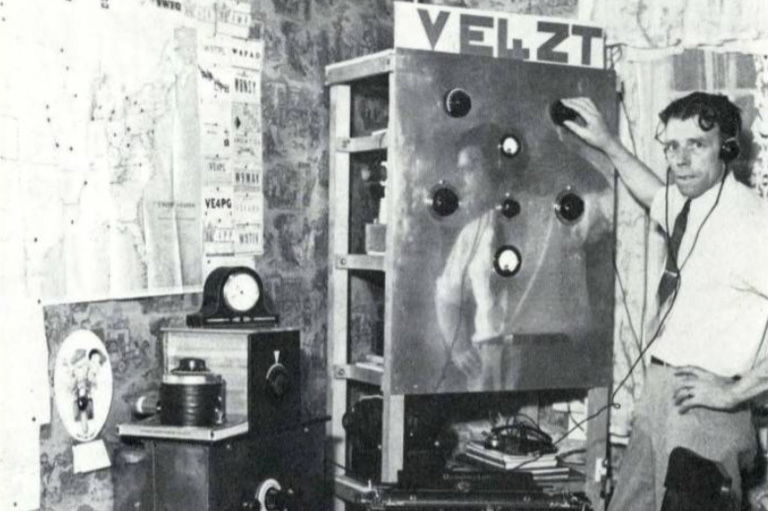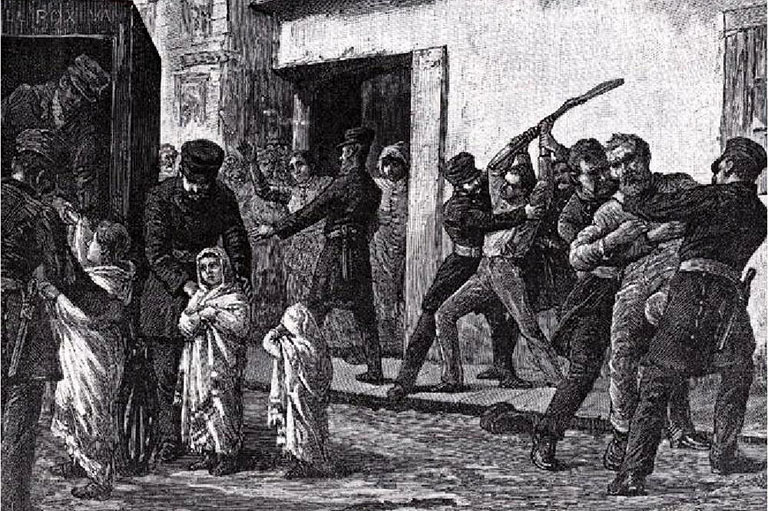Made in Canada: Handy to Have

Tuck-away-handle beer carton
We are a nation of beer lovers, consuming an estimated 80.3 litres per person according to the latest statistics. How appropriate that the tuck-away-handle beer carton was invented by Canadian Steve Pasjack in 1957.
His design resembled a piece of luggage with a built-in retractable handle that was ideal for shipping, but which could be extended for carrying. The Vancouverite’s invention allowed a beer purchaser to have one arm free to carry other necessities such as a pizza or a bag of chips.
Pasjack applied for a U.S. patent for his “collapsible carry carton for bottles” in 1958 and a Canadian patent in 1961. It was described as having a “sliding handle … that does not interfere with the collasping of the carton and yet always remains in its proper position when the carton is erected.”
Although the tuck-away-handle carton has largely been replaced by cheaper solutions, Ontario’s Steam Whistle Brewing currently offers an “improved” version of Pasjack’s original twelve-pack carrying case. According to the brewery, such a twelve-pack was once dubbed a “Scarborough suitcase.”
The next time you pick up your favourite cold brew, remember that Steve Pasjack and his carton design paved the way for your convenient carry-home purchase.
— Beverley Tallon

Walkie-talkie
Donald Hings, a communications expert working in British Columbia for the Consolidated Mining and Smelting Company of Canada, was seeking a patent for his handheld two-way radio device when the Second World War broke out.
Few had been interested when Hings released his first five-kilogram waterproof model in 1937 for miners and pilots. But he and his invention were enlisted to facilitate military communication during the conflict.
In 1942, Hings and the National Research Council released their first aluminum-cased models; these were promptly destroyed by troops running an obstacle course. More-robust models were developed, including the C-58 — which had a voice scrambler to prevent eavesdropping and a filter that removed battle noise.
The name walkie-talkie reportedly came about when a reporter asked what his invention could do. Hings replied, “Well you can talk with it while you walk with it,” and the reporter dubbed it a walkie-talkie. Hings later sued the government for a share of royalties but received only fifteen thousand dollars.
Toronto-born Alfred Gross and Polish scientist Daniel Noble have been credited as inventors of similar devices. Gross, whose family moved to Cleveland, experimented with radio equipment as a boy and, during the war, developed communication devices for the U.S. military.
— Danelle Cloutier

WonderBra
Thanks to Montreal’s Louise Poirier and the Canadian Lady Corset Company, Canadian women were able to experience the revolutionary plunging, laced, push-up WonderBra long before it became a fashion must-have for women in Europe and the United States.
Brassieres as we know them go back to the early twentieth century, and the push-up bra debuted in the 1940s. But it was Poirier’s early 1960s design (patented in 1971) under company founder Moe Nadler that eventually transformed the industry.
After buying the rights to market an earlier, much different “Wonder-Bra,” the company used the spelling WonderBra to market Poirier’s creation. It boasted of the bra’s “precision engineering” and fifty-four design elements. While women were turning away from girdles and from regarding undergarments as primarily functional, television advertising promoted the WonderBra as expressing beauty, youthfulness, and newfound freedom.
In the early 1990s, a combination of fashion trends and industry competition led to a surge in sales, first in the United Kingdom and then at the bra’s 1994 U.S. relaunch by the Sara Lee Corporation. A San Francisco Chronicle headline during the so-called “bra wars” asked, “Will Wonderbra Save the World?” Later, in 2008, a survey of U.K. women declared it the top fashion innovation of all time.
— Phil Koch

Kerosene lamp
As the nights grow longer, give a thought not only to life before electricity, but also to nights before a clean, brightly burning lamp oil hit the market. With whale oil prices in the mid-1800s rising as the number of whales diminished, and the most common alternatives an explosive “burning fluid” made of turpentine and alcohol or the pale yellow light of candles and hearth fires, people needed a new fuel to keep the darkness at bay.
Enter Nova Scotia’s Dr. Abraham Gesner. In August 1846, at a PEI lecture, the geologist/doctor/chemist introduced the audience to “kerselain” – from the Greek word for “wax oil” – which we now know as kerosene. Distilled from coal, it gave off a bright light, was smokeless, and was not volatile like the “burning fluid.”
However, history views the invention as secondary to what Gesner did for the petrochemical industry, which may never have existed without the refining processes he perfected. Imperial Oil recognized his contribution by constructing an engraved monument on Gesner’s gravesite “as a token of appreciation and for his important contribution to the oil industry.”
— Rick Wood

Newsprint
More poet than inventor, Nova Scotian Charles Fenerty combined his love of nature and his family ties to the paper industry, added a dash of creativity, and came up with newsprint — a relatively inexpensive paper that forever altered the spread of the printed word.
Around 1838, Fenerty heard mill operators grumbling over the scarcity of rags, the fibres of which were used to make paper. Europe went as far as to cut off the supply of cotton to North America when the demand became too high.
Fenerty experimented with the fibres found in his beloved trees, of which he often wrote. By 1844, he publicized his success in creating paper from spruce wood pulp. As is often the case, he failed to patent his invention and saw little personal gain.
But Fenerty’s achievements were remembered by his community. In a session of Parliament in April 1996, Sackville- Beaverbank Member of Parliament William MacDonald commented: “All the print media people who cover this House should take note, for were it not for Charles Fenerty, the newspaper or magazine you work for would probably not exist today.”

Quartz clock
The accuracy of timekeeping was greatly improved by the invention of the quartz clock, and Canadian-born Warren Marrison was at the centre of the discovery.
In 1927, Marrison was working as a telecommunications engineer at Bell Telephone Laboratories in New Jersey. The telephone and radio industries were burgeoning, and the need to maintain stable electrical frequencies was critical.
Marrison’s search for reliable frequency standards extended earlier research in piezoelectricity –– the conversion of mechanical signals into electrical signals, and vice versa. Along with his colleague J.W. Horton, he developed an accurate and very large clock. Their first quartz clock took up the better part of a small room.
Previous clocks were mechanical, based on springs or gears. The quartz oscillator was based instead on the regular vibrations of a quartz crystal in an electrical circuit and was found to be more precise than the best mechanical clocks.
Beginning in the 1930s, astronomical observatories and time-standard laboratories throughout the world adopted the superior quartz device. Today’s electronic watches use miniature versions of the same timekeeping method, which can maintain time to within about one second every ten years.
— Beverley Tallon

Jolly Jumper
Every parent wants a happy, healthy, bouncing baby girl or boy, and Olivia Poole was no different. When Poole’s first child, Joseph, was born in Ontario in 1910, she remembered that mothers at her childhood Ojibwa community in Minnesota would sometimes secure their babies in a papoose tied to a sturdy tree limb. They would then pull downward, allowing the baby to bounce gently.
To make her own baby bouncer, Poole used a cloth diaper for a harness, an axe handle for a spreader bar, and had a blacksmith forge a spring to allow for the bounce. She called the device a Jolly Jumper.
Born in the United States, Poole later moved to Brandon, Manitoba, where she studied music and met her husband. All of her seven children, and later her grandchildren, spent time in the Jolly Jumper.
After Poole’s family convinced her to try selling the device, commercial production of the Jolly Jumper began in 1948 in British Columbia. In 1957 Olivia and Joseph registered the patent, and today the baby bouncers are still made in Canada and sold under their original name.
— Kristen Fry

Snow goggles
One might assume that inventions to protect us from the harmful effects of the sun originated on a beach near the equator. Yet those Ray Bans came from much further north.
In the Arctic, the sun shines low on the horizon twenty-four hours a day for nearly 190 days during the summer. Snow blindness occurs when the sunlight reflecting off the surface of the snow combines with the light angled directly into the eyes to burn the retina. For the Inuit, snow blindness hindered hunting, travel, and trade. The painful condition could last for days, increasing the risk of being blinded and lost, which in turn could prove fatal.
The Inuit constructed eyewear from caribou antlers, bone, leather, or wood. Carved to fit the natural curve of the face, with a divot for the bridge of the nose and two slits for the eyes, these first snow goggles date back to the Thule Inuit, two thousand years ago. The slits allowed them to see, but blocked enough light to prevent snow blindness. As technology advanced, the design was adapted into the sunglasses we wear today.
— Rick Wood

Road lines
Canada’s roads and byways were not nearly as congested a century ago as they are today. Nor did many of our country’s roads feature paved surfaces.
But as traffic increased and accidents became more commonplace in the early twentieth century, drivers found road safety an increasing challenge. They resorted to horns and bells as means of alerting oncoming vehicles, yet these were far from ideal.
In response, Ontario engineer John D. Millar devised what now seems a straightforward manner of helping drivers to share the road — painting lines to divide lanes and to separate traffic moving in opposite directions.
Millar was working for the Ontario Department of Transport when he came up with the idea in 1930. A stretch of highway near the provincial border with Quebec was the first to receive the treatment. Millar’s idea soon received wide acceptance — within a few years, white painted lines were standard not only on highways in Ontario but all across North America, and accident rates dropped significantly. Yellow, dashed, and double lines followed as ways of providing additional information to drivers.
With today’s crowded streets and often jammed freeways, it’s hard to imagine making safe progress without guidance from painted lane markings.
— Phil Koch

Garbage bag
The now ubiquitous plastic garbage bag hasn’t always existed. In fact, three different Canadians came up with the idea at around the same time.
Winnipegger Harry Wasylyk first made the green bags in his kitchen around 1950. His process involved heating pellets of the durable plastic polyethylene, which were then flattened and stretched. The thin air-proof and waterproof material was finally shaped into sacks. Wasylyk went into business, providing bags to the Winnipeg General Hospital.
Meanwhile, Toronto resident Frank Plomp began supplying hospitals and offices with his own bags, and Larry Hansen, an employee at the Lindsay, Ontario, plant of chemical company Union Carbide, started making bags for use at the plant. When Union Carbide heard about Wasylyk’s business, the company bought him out and began making garbage bags using the extra polyethylene produced at its Montreal plant.
The invention was soon marketed to homeowners and was a huge success — today garbage bags and other plastic bags are everywhere. Unfortunately, this has created an environmental challenge. Millions of the bags are disposed of around the world each day. Many end up in landfills, where they take hundreds of years to decompose.
— Jen Clark
Themes associated with this article
Advertisement
You might also like...

Canada’s History Archive, featuring The Beaver, is now available for your browsing and searching pleasure!

